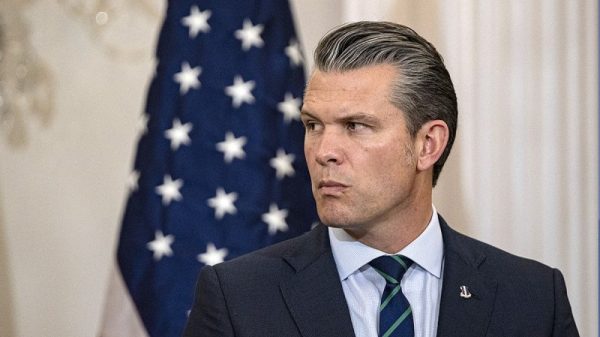Recently, White House Council of Economic Advisers Chair Jared Bernstein was featured in a viral clip in which he appears to flub a basic question about his job. The interviewer asked, “Like you said, they print the dollar, so why does the government even borrow?” Here’s the clip of his answer.
In all fairness to Mr. Bernstein, he was asked a loaded question. The interviewers phrased the question to make it sound like the institution that issues debt and the institution that prints money are one in the same. That is not the case. The US Treasury borrows while the Federal Reserve prints money. The separation of these two institutions is designed to prevent the government from using the money printer to pay for government spending and the inflationary consequences that come with it.
As my colleague Thomas Hogan noted, advocates of Modern Monetary Theory (MMT) intentionally blur the lines between the Treasury and the Fed. For example, in Stephanie Kelton’s The Deficit Myth, she claims, “Both the US Treasury and its fiscal agent, the Federal Reserve, have the authority to issue dollars.” This claim stems from the Bureau of Engraving and Printing, within the Department of the Treasury, having the authority to print our paper currency. What Kelton omits, however, is that those notes are distributed by the Fed through its network of regional banks.
It’s important to note that the relationship between the Treasury and the Fed is far from total independence. Throughout its history, the Fed has succumbed to political pressure from elected officials on both sides of the aisle, bureaucrats, and academics. The Fed currently operates under a policy of “constrained discretion,” where Fed officials to stick to rules during “ordinary” times while giving them the ability to act with discretion during emergencies or crises. It’s during emergencies where interest groups can most easily exert influence over monetary policy. For example, during the COVID-19 pandemic, the Fed opened numerous facilities to allocate credit, which ultimately blurred the line between fiscal and monetary policy. The policy of “constrained discretion” has led to the mess we’re seeing now.
Advocates of MMT want to blur the line between fiscal and monetary policy even more than what we have now. If they accomplish this, it will spell disaster for the American people.
What Happens When Government Uses the Money Printer to Finance Spending?
This question has been asked and answered throughout economic history. Adam Smith discusses this point in Book V of The Wealth of Nations:
It occasions a general and most pernicious subversion of the fortunes of private people; enriching in most cases the idle and profuse debtor at the expence of the industrious and frugal creditor, and transporting a great part of the national capital from the hands which were likely to increase and improve it, to those which are likely to dissipate and destroy it.
Smith comments that attempting to pay down debt with newly printed money is a “juggling trick” used to avoid default. This trick comes at the expense of everyday citizens, as the inflation brought about by money printing destroys the purchasing power of the money they hold.
George Selgin made similar warnings in his book The Menace of Fiscal QE. Fiscal QE refers to the policy of the Federal Reserve purchasing assets and expanding its balance sheet to support government spending. Selgin notes that while Fiscal QE is extremely tempting it casts doubt on the central bank’s independence and creates an unaccountable back door for spending.
This question was also explored in a 2021 research paper by AIER Senior Fellow Joshua Hendrickson, titled “What Happens When Governments Pay for Spending with Money Creation? Lessons from the Early Riksbank” In the paper, Hendrickson discusses a historical example of mid-1700’s Sweden when the Swedish parliament controlled both the government budget and the central bank (known as the Riksbank), bringing both fiscal and monetary policy decisions under one governing body. Results from Hendrickson’s research as well as others show that the government was able to finance its spending using money creation but at the cost of rising inflation and no impact on inflation-adjusted economic activity. The government gained at the expense of the people. Economists cite similar results in Germany following World War I, Argentina over the past 25 years, Turkey under President Erdoğan. The clear takeaway is that just because a government can finance spending with money printing doesn’t mean it should.
In the case of the United States, where the US dollar is currently the world reserve currency and the US Treasury security is the global reserve asset, we’d still see similar results despite what the advocates of Modern Monetary Theory (MMT) claim. The “world reserve” status depends on investors’ faith in the US government to keep its promises. If policymakers were to openly embrace MMT, it would face all of the knowledge problems that other attempts at government intervention have faced before. Ultimately, the knowledge needed to organize an is decentralized and not easily quantified, because much of it is contingent on time and place. The closes the US came to this arrangement was during the late 1960s and early 1970s when the Fed funded deficits using expansionary monetary policy, resulting in stagflation.
Furthermore, there would be rampant cronyism if the federal government were to openly embrace MMT. The logic of collective action would play out. Politicians, eager to win political support, would promise to use the money printer for small, vocal groups seeking to concentrate benefits for these groups and disperse costs among the American people. When inflation results from this policy, don’t be surprised when politicians blame it on corporate greed, price gouging, and anything else besides themselves.
So Why Does the Government Borrow? Look at the Incentives!
If the government can’t use the money printer to spend, why borrow instead of raising taxes? This is another point Adam Smith discusses in Book V of The Wealth of Nations,
The government of [a commercial state of society] is very apt to repose itself upon this ability and willingness of its subjects to lend it their money on extraordinary occasions. It foresees the facility of borrowing, and therefore dispenses itself from the duty of saving.
Smith’s discussion of devaluation and inflation above as well as his comments on public debt here show that there’s nothing new under the sun. Policymakers have an incentive to finance spending with money printing and debt to hide the cost of spending from taxpayers. These costs cannot be hidden forever, though, as inflation and tax increases to pay for yesterday’s unproductive spending will eventually follow.
You don’t need to read Adam Smith to understand that raising taxes is politically unpopular. A politician’s top two priorities are to get elected and then get reelected, so raising taxes on their voters is to be avoided at all costs. At the same time, voters also love to be the recipients of government money. Government debt offers a politician the ability to win over voters with increased spending and put off the sting of tax increases until later. Politicians also can rest assured that the government has willing lenders that are happy to purchase government debt knowing that they’ll be paid back with interest.
As my colleague Peter Earle and I noted, the government taking on debt has a two-fold effect. In the short term, private capital is diverted away from the productive private sector and into the unproductive public sector. As economist James M. Buchanan put it, spending that is funded by debt is “in effect chopping up the apple trees for firewood, thereby reducing the yield of the orchard forever.” The second effect, Buchanan also noted, is that debt-financed spending also shifts tax burdens from present to future generations. While bond investors trust that their loan will be paid back with interest, future generations will bear the cost of the government spending undertaken today.
Don’t be fooled by anyone saying there is no cost to printing money or that deficits and debt do not matter. History has clearly shown that when the government decides to finance spending by printing money or taking on massive amounts of debt, it is the average person who is bound to get hit the hardest.




































